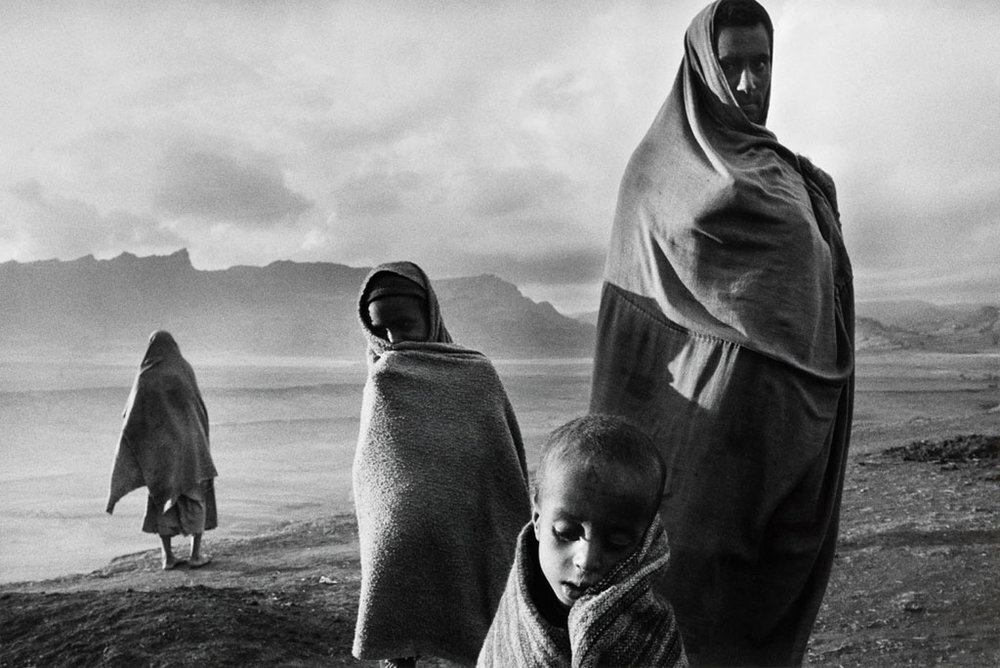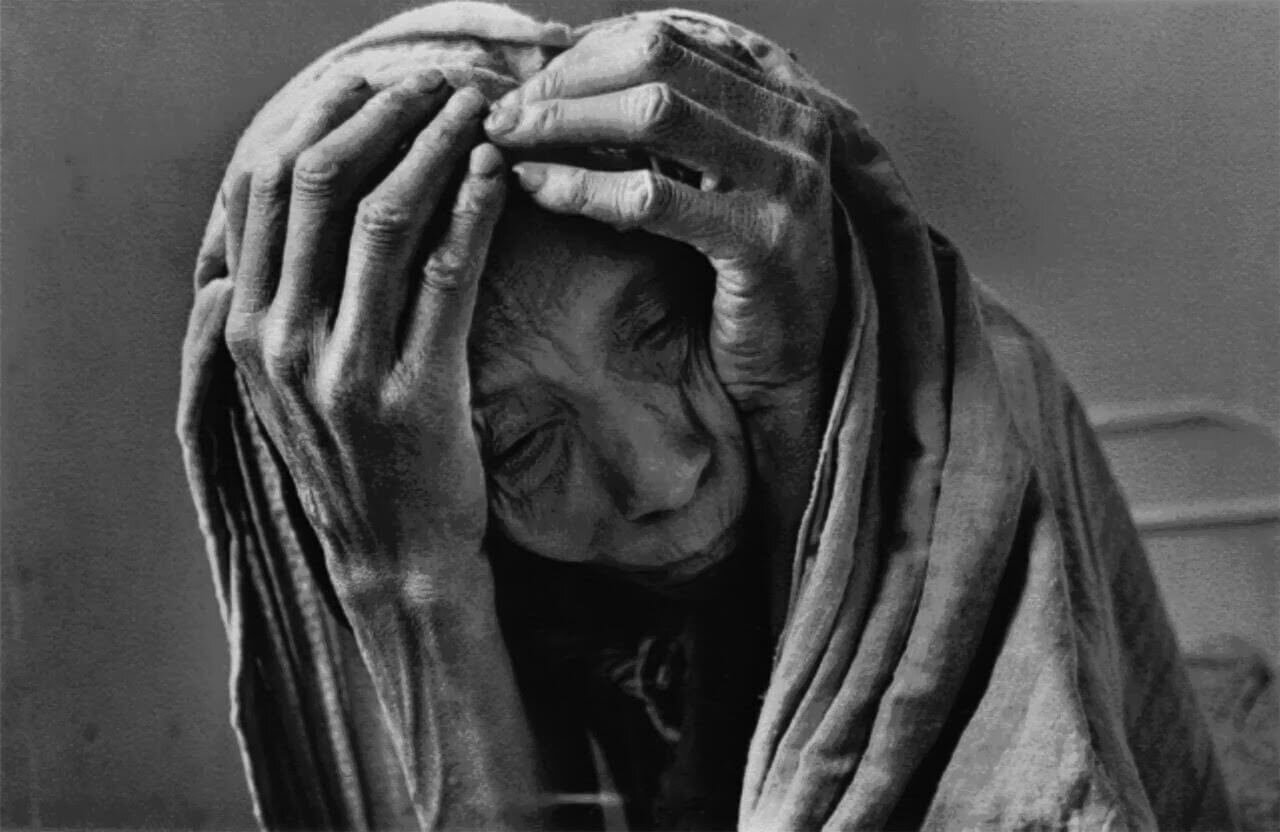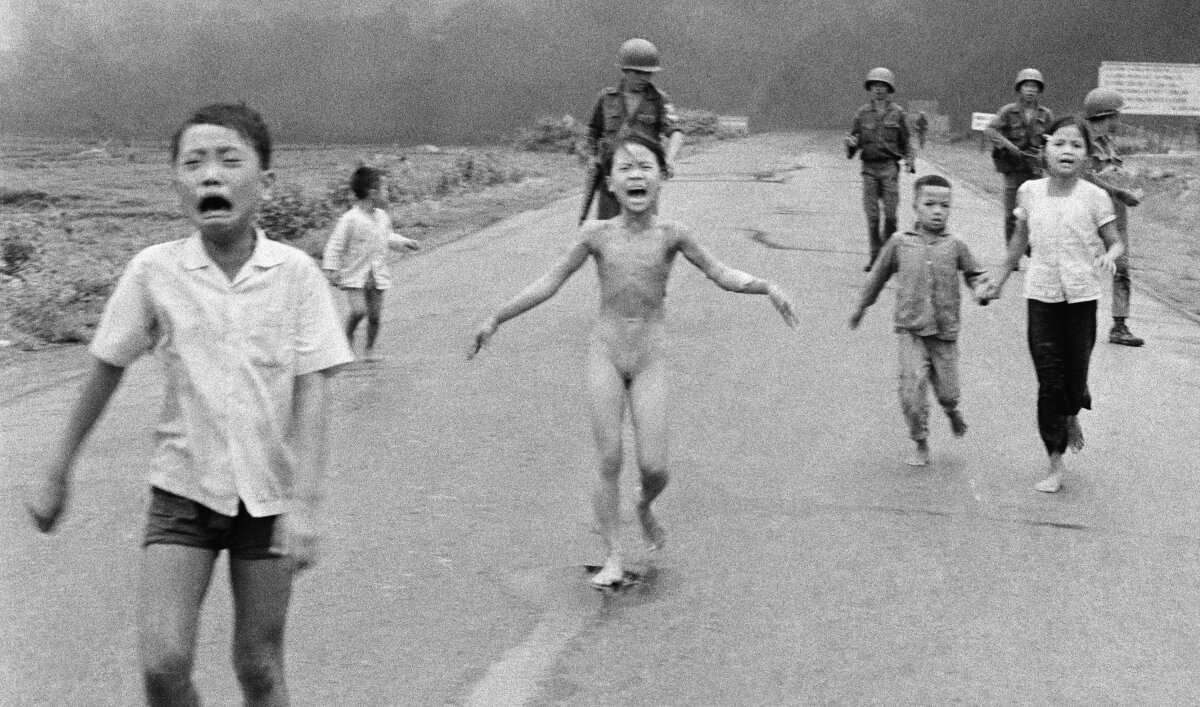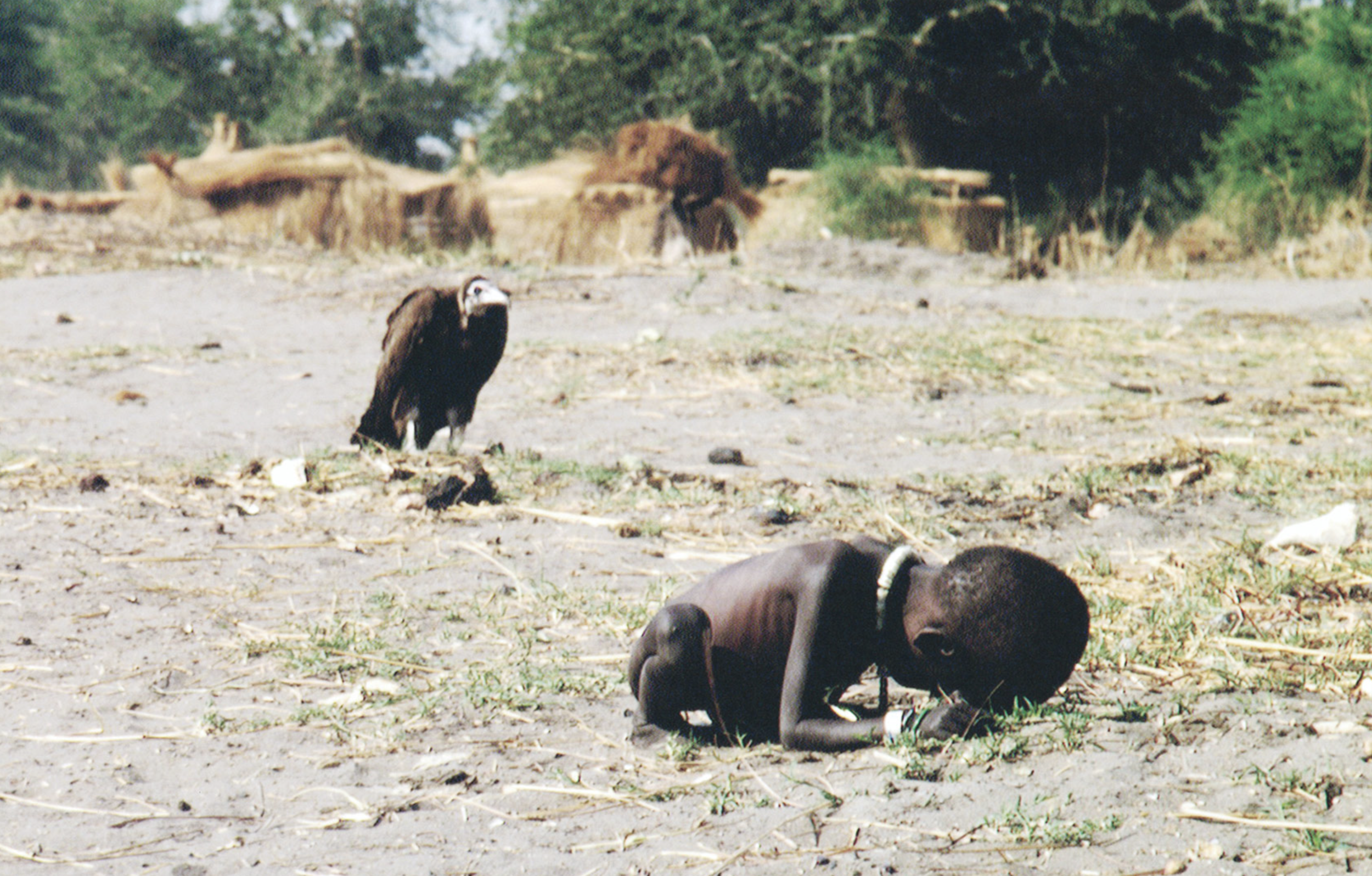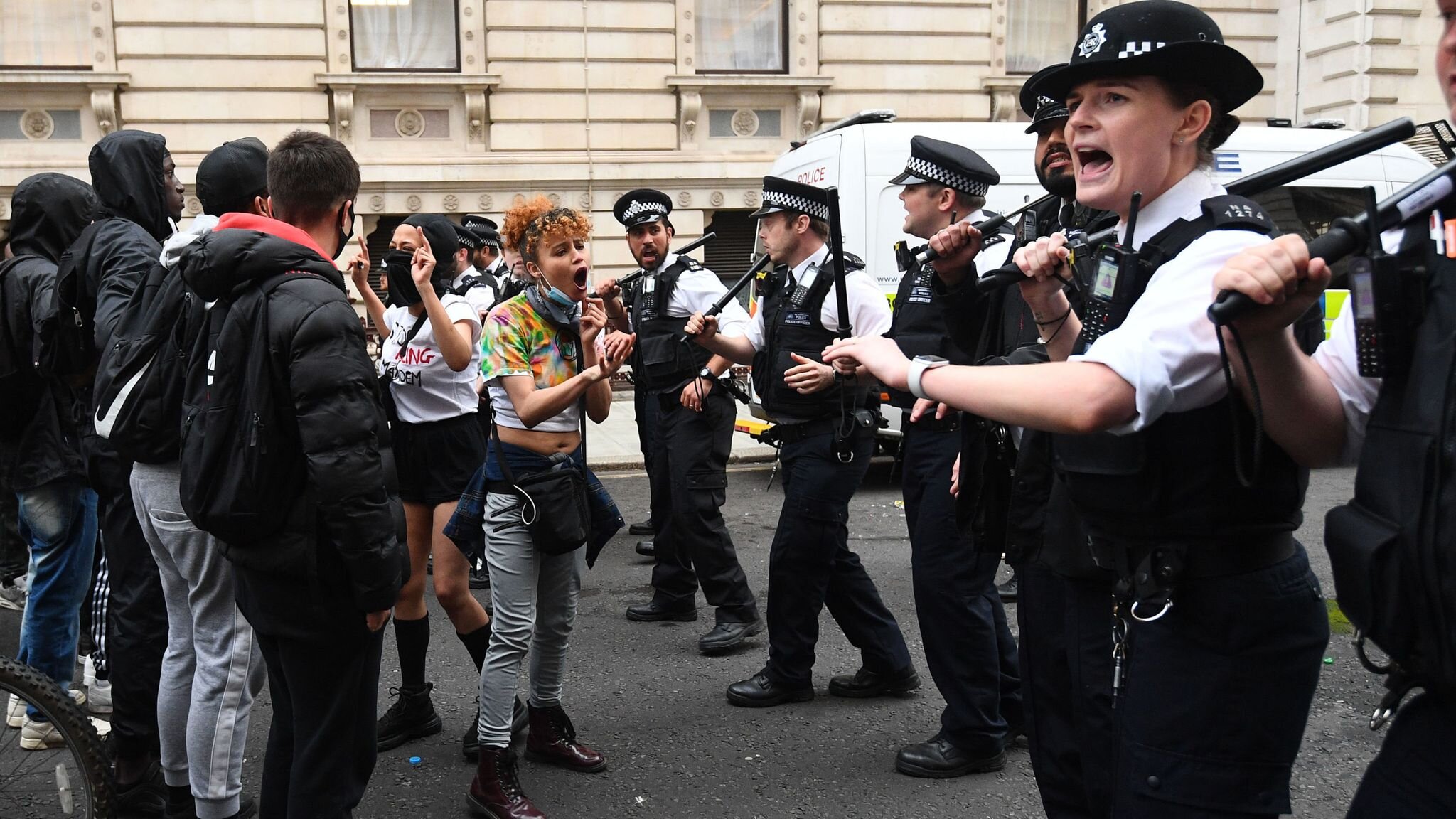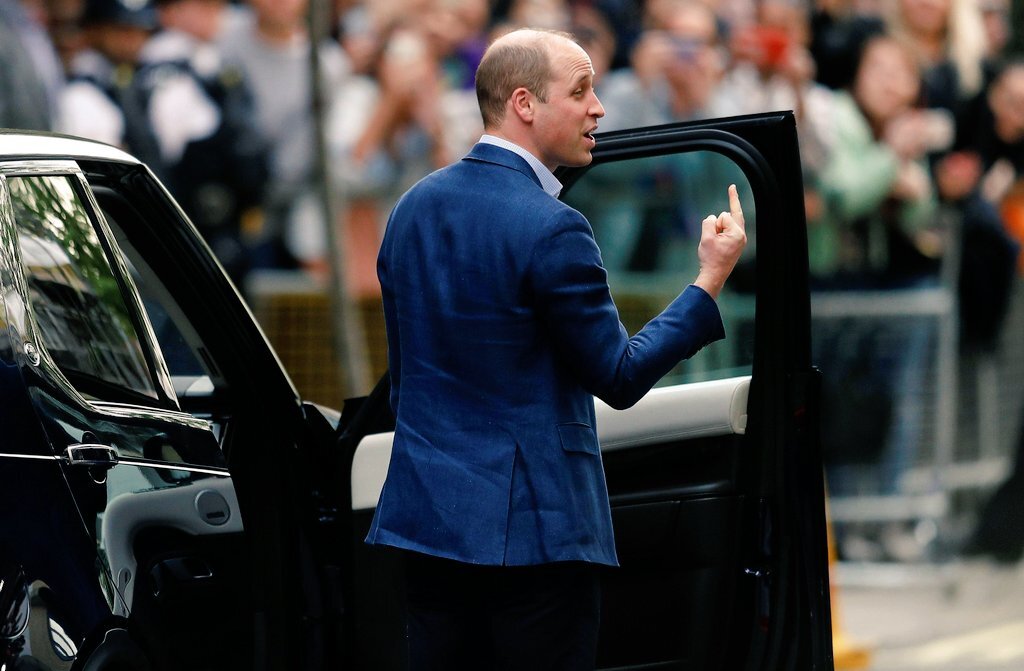Salgado, too pretty to be taken seriously?
Much has been said of Salgado’s work, especially in the article by Ingrid Sischy in the New Yorker. It is indeed undeniably strong in aesthetic. Would I go so far as to say beautiful? I am not sure if I would say pretty or beautiful for his work, especially given the nature of the subjects. Dramatic, biblical, strong, yes I would use these words for his work; but beautiful? Not so sure.
So what seems to be the issue here? Salgardo is said to be a reportage, journalistic photographer and a fine art photographer. Two camps that don’t sit well with each other. I guess you’re either making art or making a statement about a geo political issue, and I guess you can’t do both? Perhaps the channel of transmission has some static in this case?
Raising awareness of issues about the environment, poverty, world hunger and politics through art are not new things at all. Salgardo is not new in doing this. Reporting on these issues with strong journalistic images is not a new thing either. But the style is very different, I think perhaps that’s where the clash is coming from.
Images of the Vietnam war, starving children in Africa and pictures from the recent Black Lives Matter campaigns and demonstrations are usually of a certain type. They are designed to shock us, to bring home the horrors. Protest images normally show conflict between the protestors and the authorities, perhaps to reinforce the view point that we should care and our civil rights are being affected, but it certainly shows a bias on the part of the image taker.
How does perspective matter? Well, it can of course change the entire story being presented. Sometimes what you think you are seeing is not what is really happening. As a photographer we must think about the perspective that we are taking the image from, how are we influencing the outcome of the image from our own preconceived ideas and thoughts? Sometimes, even in photojournalism it’s done deliberately to be able to “sell the story”, if you’re at a protest and it’s very peaceful and calm, everyone is relaxed and there are children there playing, are you going to take those picures? Or do you want the image above with protesters and police at a stand off, after all they’re the pictures you’re used to seeing. Consider the image below - perspective matters!
The ones that deal with poverty, famine and disease are usually very uncomfortable to look at. One certainly has a feeling of peeping at these people, a feeling of “I should do something, but I don’t know what and that I shouldn’t stare too long, because it’s rude and anyway and I don’t feel happy looking at this.”
Salgardo’s images however are of a different nature. They are strong and although covering the same topic leave the subject with a sense of strength and dignity. This I feel might be the source of the clash.
Drawing from my own personal experience, I have lived and travelled in Asia quite a lot, as such I have been in areas and regions where extreme poverty exists. At first I was always left with a feeling of guilt in these places; should I be here, should I be dressed like this? These people have very little and here is this westerner, who of course stands out very much, walking through with his nice clothes and probably a bit too much money in his pocket like the super tourist getting his poverty porn fix. I then came to the conclusion, I am a foreigner, I am a westerner, I cannot hide that, and it is not my fault that I was lucky enough to be born in a place with more privilege. I also came to the realisation that the issue was mine. When I interacted with the people around me, if I treated them decently then I was nearly always welcomed.
It’s said of Salgardo that he comes from Brazil so therefore is not privileged and of a wealthy status, but that’s like saying no one from Brazil can be rich. It’s then pointed out that he comes from a good background in his country and had a position of status and good education etc, so he is the middle class guy imposing his gaze and ideals on these people. At the same time not much is ever said about Martin Parr when he is commissioned as the artist in residence to photograph the poor areas of Liverpool for example. Martin Parr was criticised by the locals in Liverpool as being a middle class guy making them look poor and dirty, but that’s not how his work is put across in the galleries and main stream rhetoric.
Much is said about Salgardo’s use of Christian and Biblical Iconography also, but Brazil is a strong catholic country, I would assume, even if he is not religious this identity would be strong in his mind. Rather than the male gaze, perhaps we have a religious gaze? He is also shooting issues that are biblical in scale and proportion, it would be hard not to put this across in the work, surely?
So where are we? Well, personally, I can stop and look at Sallgardo’s work, really look. I do not feel like the subjects are being objectified or othered, I see a once proud and strong person that has become a victim of famine or disease. These issues are ones we should be talking about, tackling and confronting. If we make images that are too uncomfortable to look at then the world will look away.
